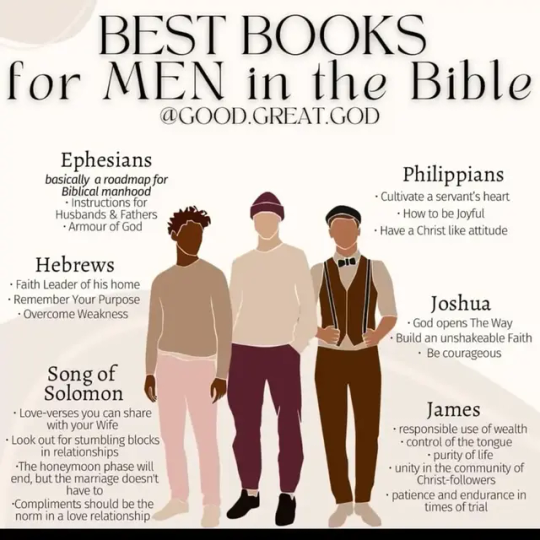#all the books with genealogies bc male representation <3< /div>
Explore tagged Tumblr posts
Text
cw Joy being a hater about other people's readings of biblical texts

this is making me cringe so much
#a sock speaks#the Philippians and James summaries are the least bad#but ~Ephesians is man-appropriate because household codes~ is unforgivably bad!#the Hebrews and Song of Solomon sections barely relate to the content of the actual book#the Joshua section only references a few select passages from early in the book#why not list out of context verses for men if this is the level of effort you're going to use 😭😭😭#I should make a Bible books for men infographic myself actually now that I think about it#Ecclesiastes: learn that life is unfulfilling and mope about it but don't mope forever because life is also finite#Psalms: praise God. whine about your suffering to God.#all the books with genealogies bc male representation <3#Jonah. men need to be soggy and grouchy and miserable.#Galatians. the subject matter speaks for itself.#<- was that one a bit much actually? Paul can make circumcision jokes but I better stay in my lane#seriously though the wisdom literature and particularly Proverbs is so directed toward a male audience#I don't like imposing too much gender onto whether/how you apply scripture but there are better options even if you want to do that!
3 notes
·
View notes